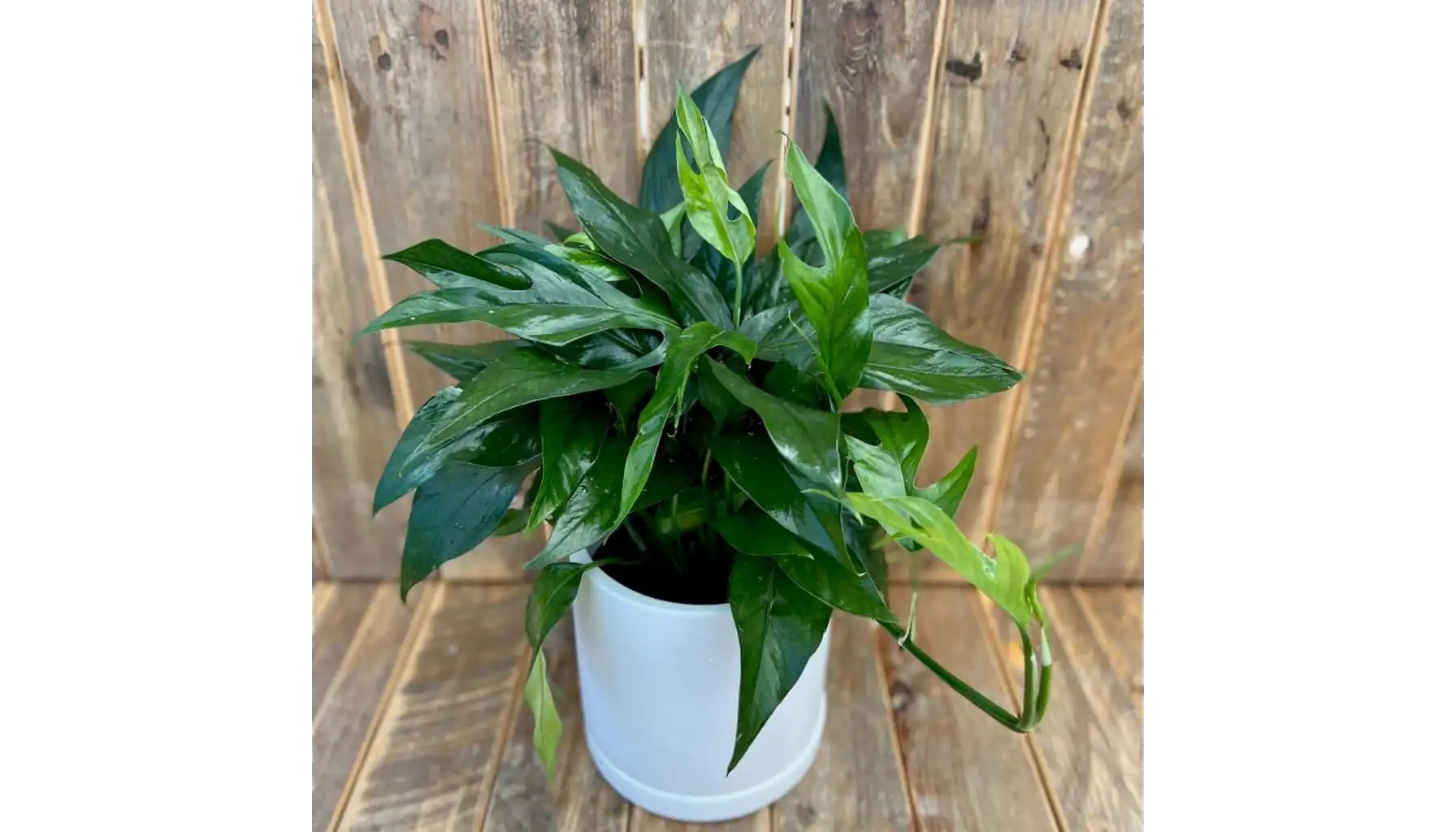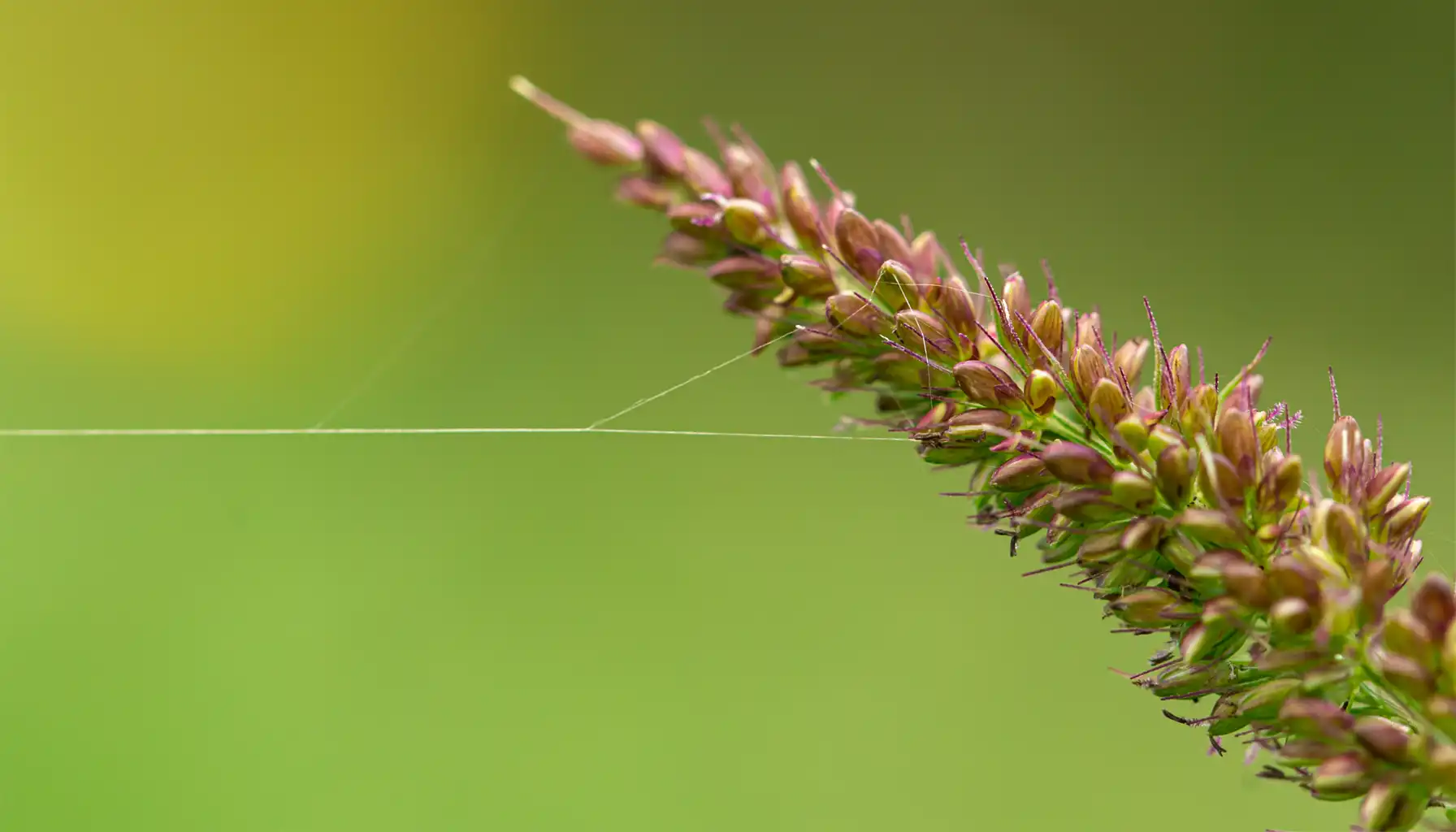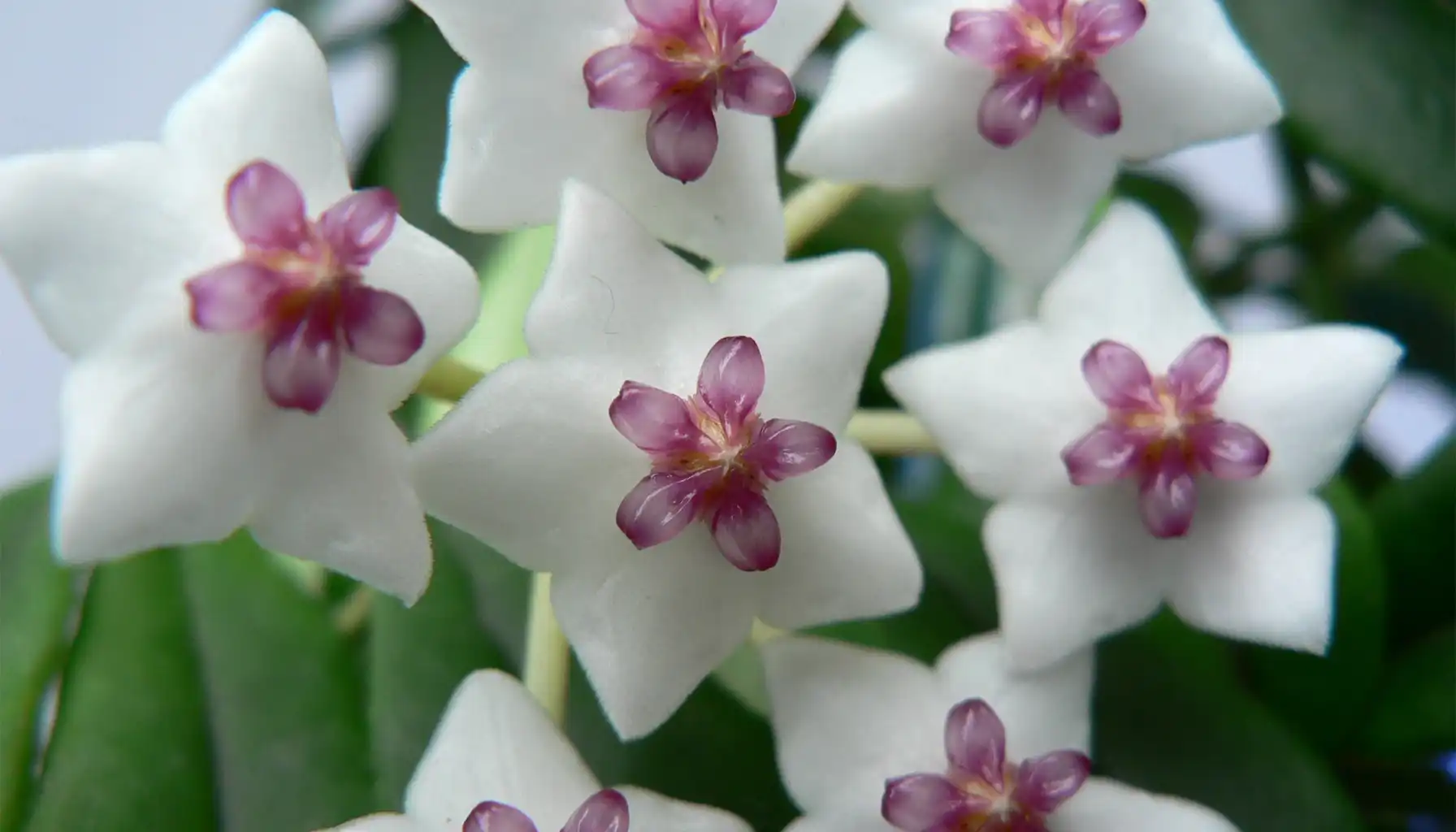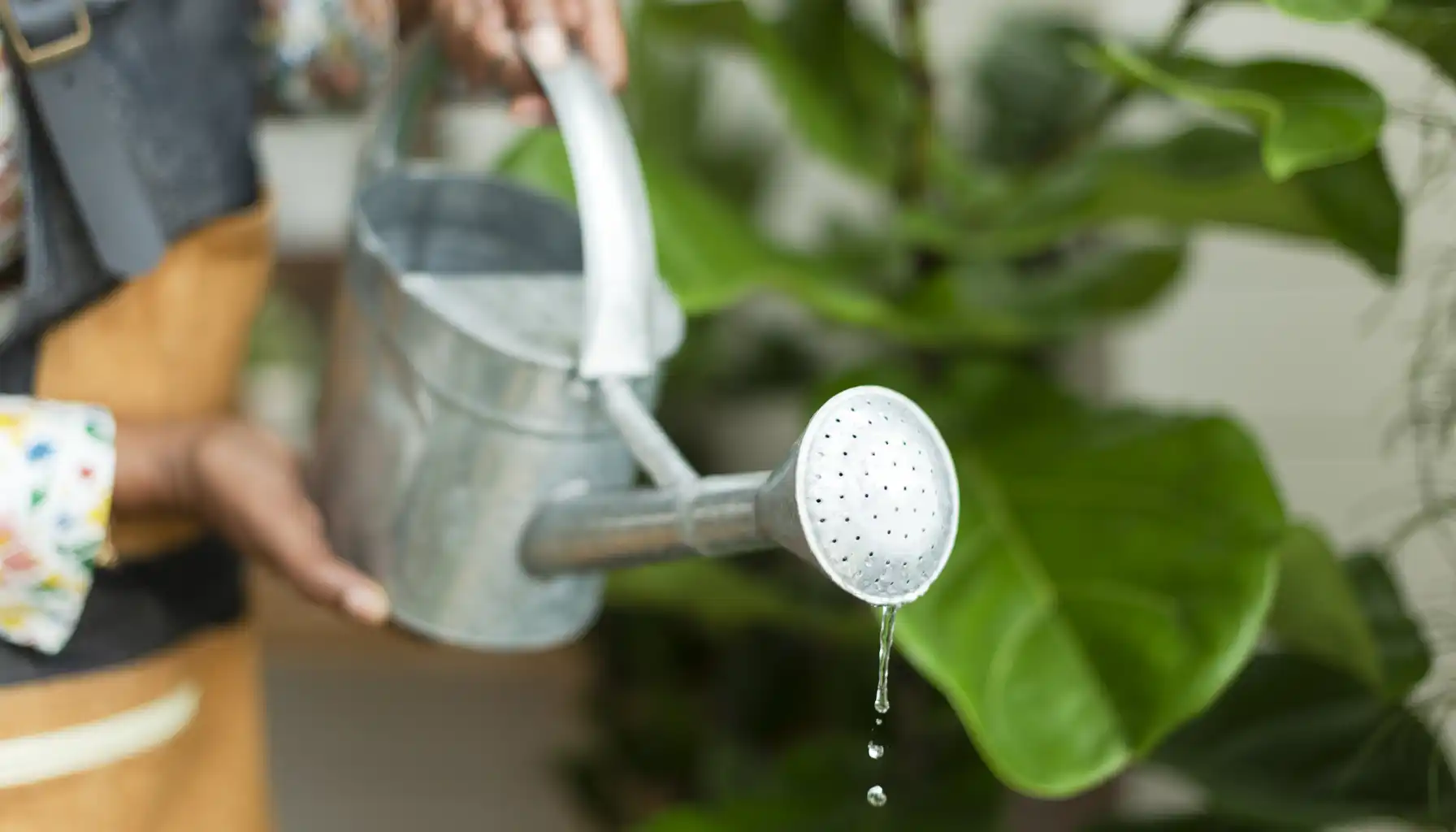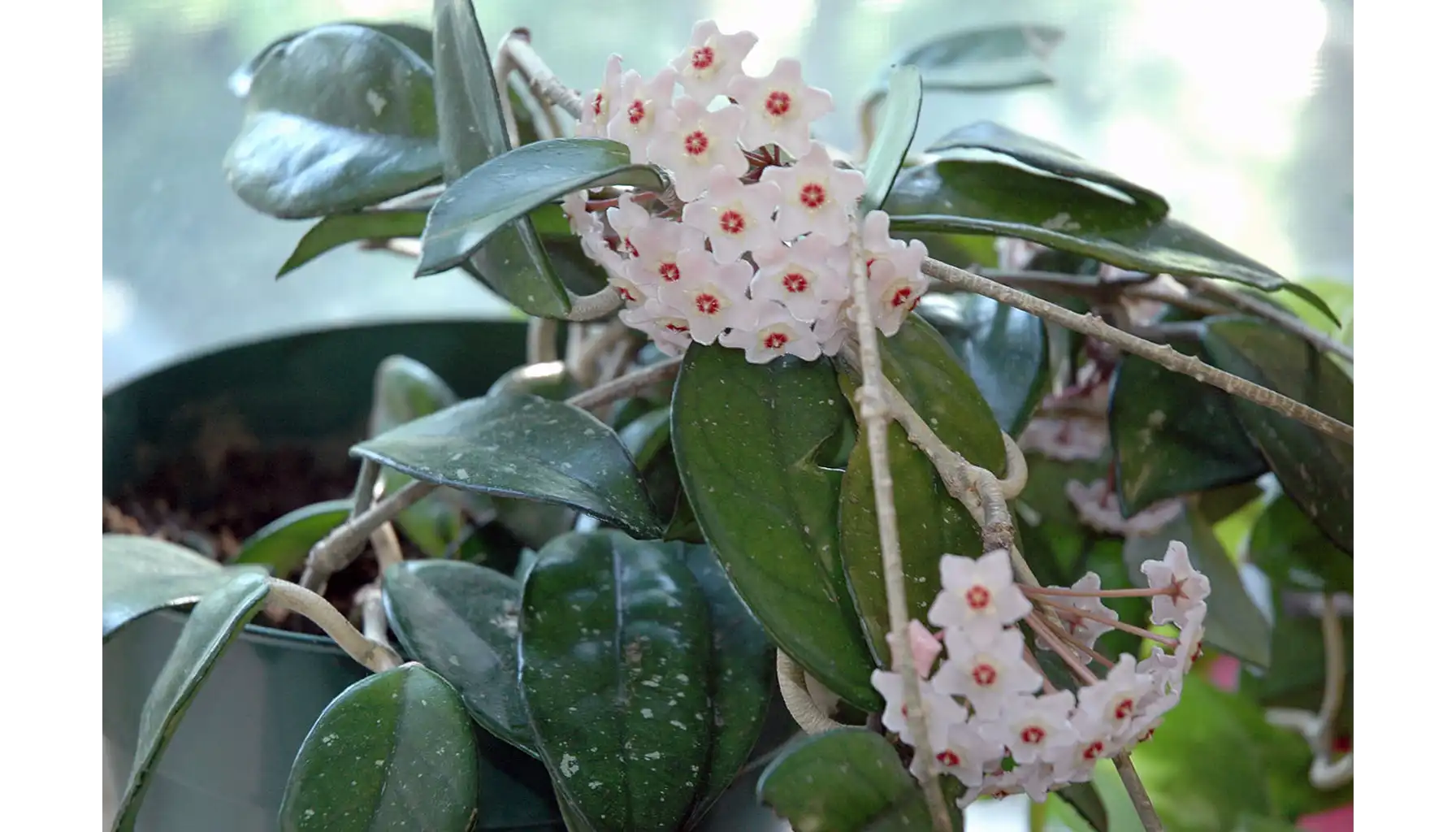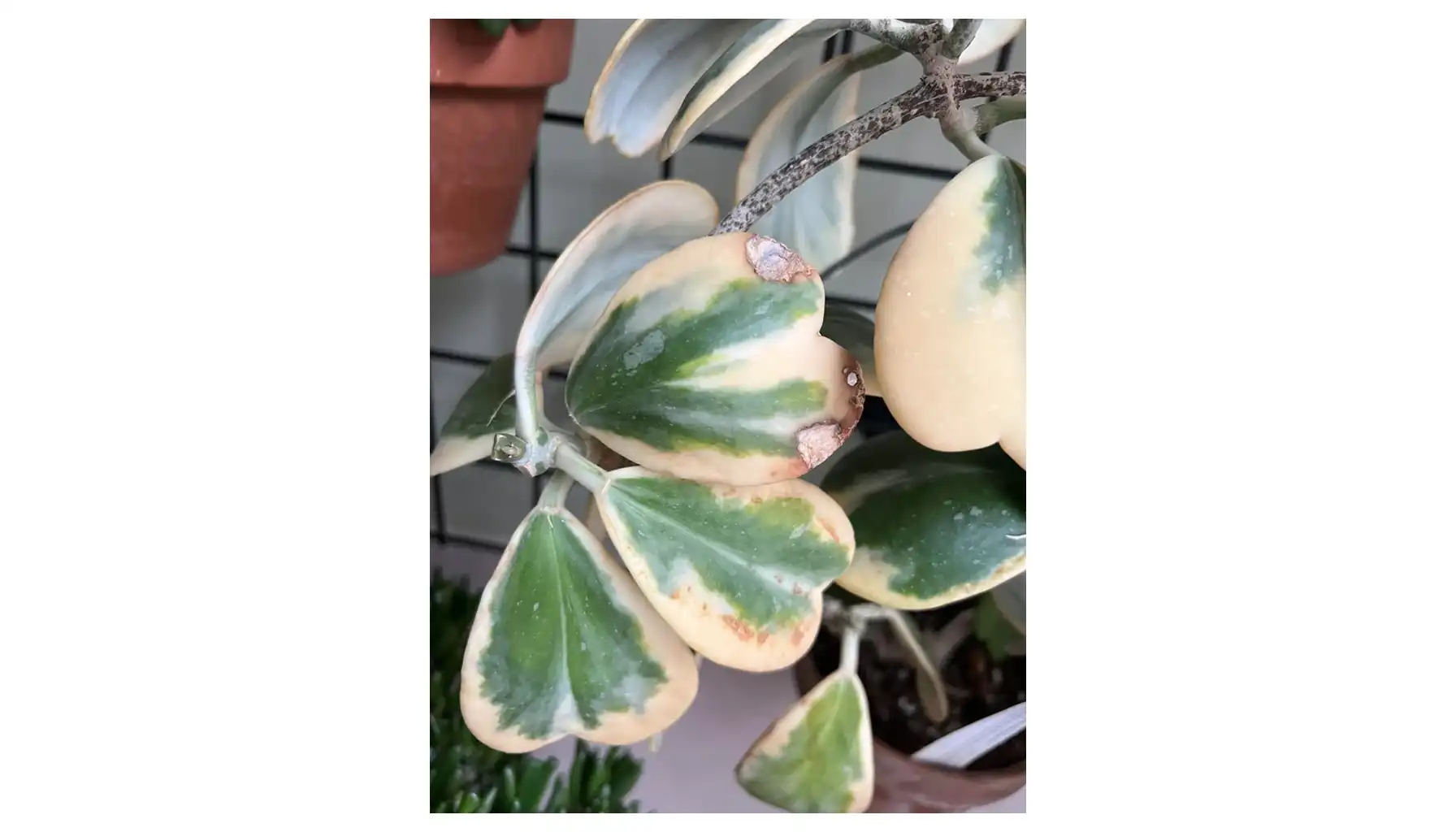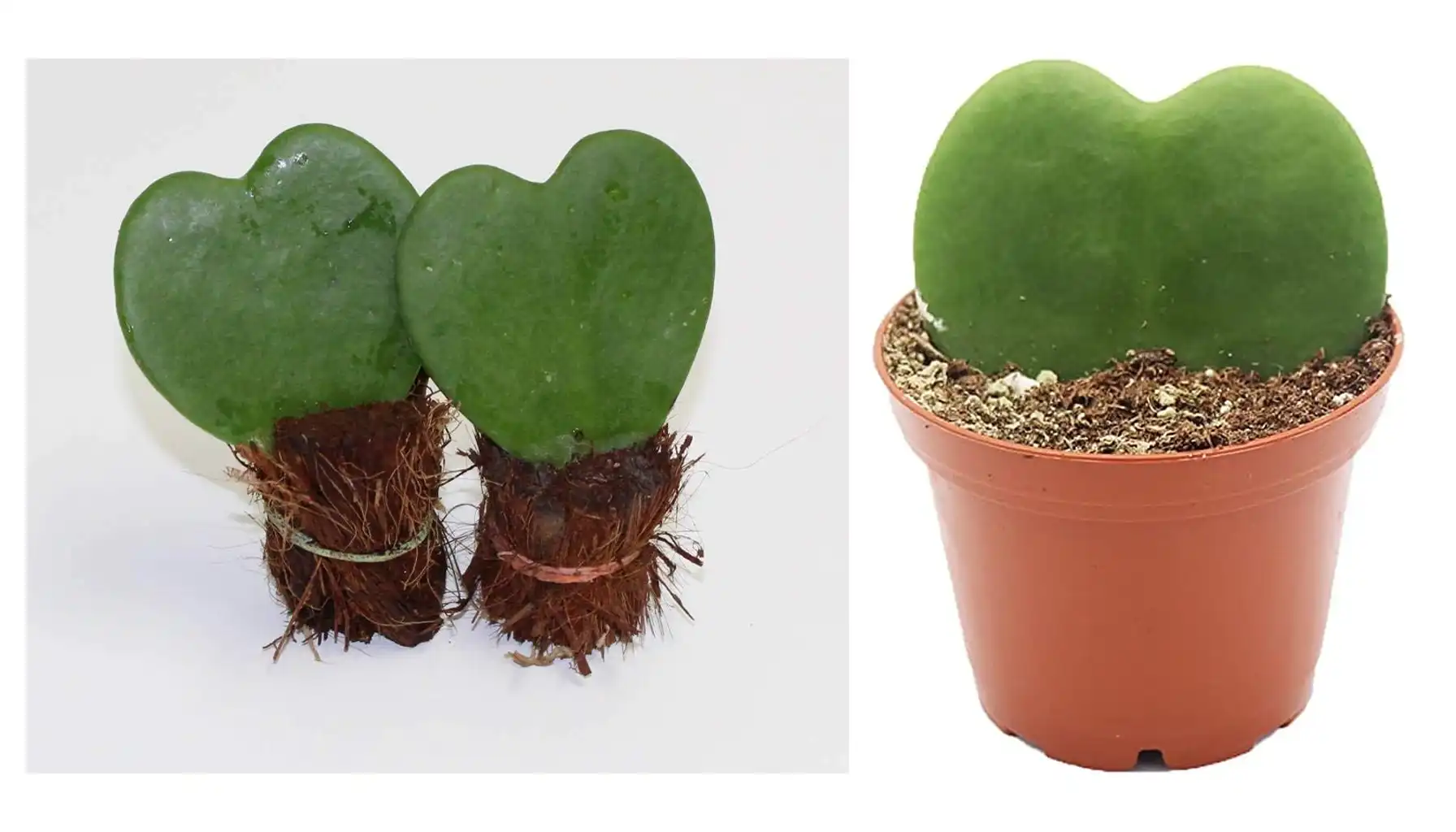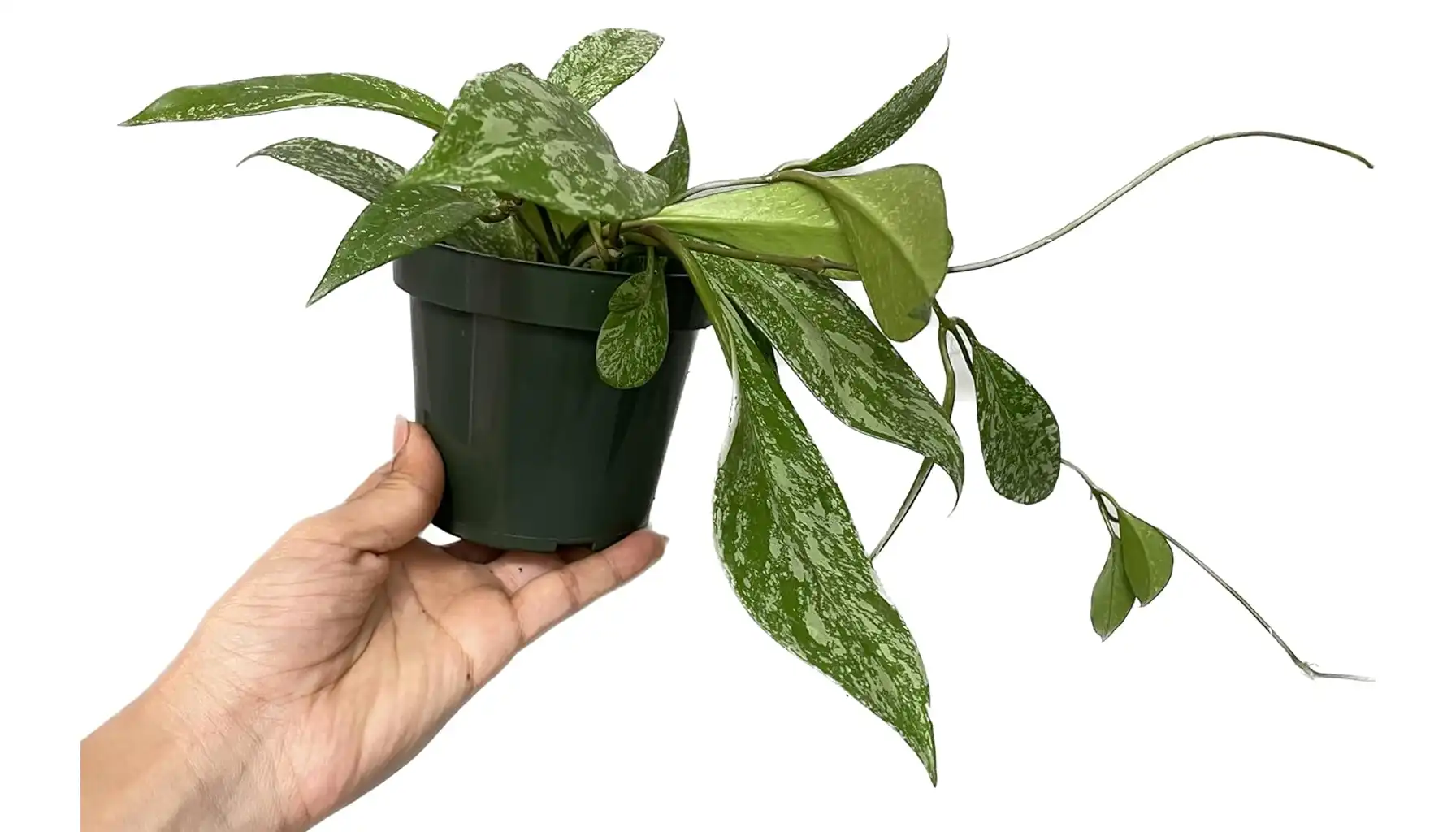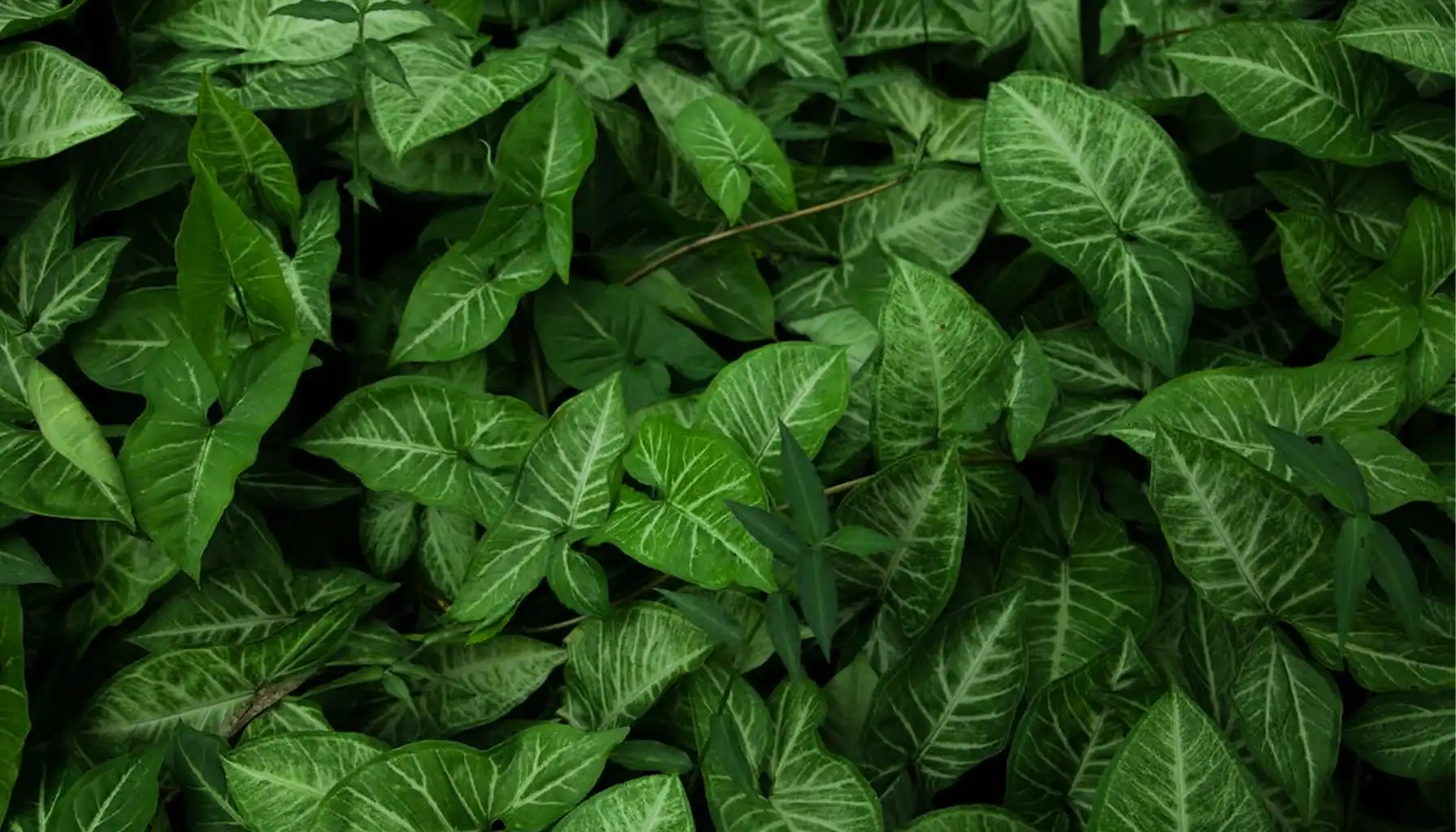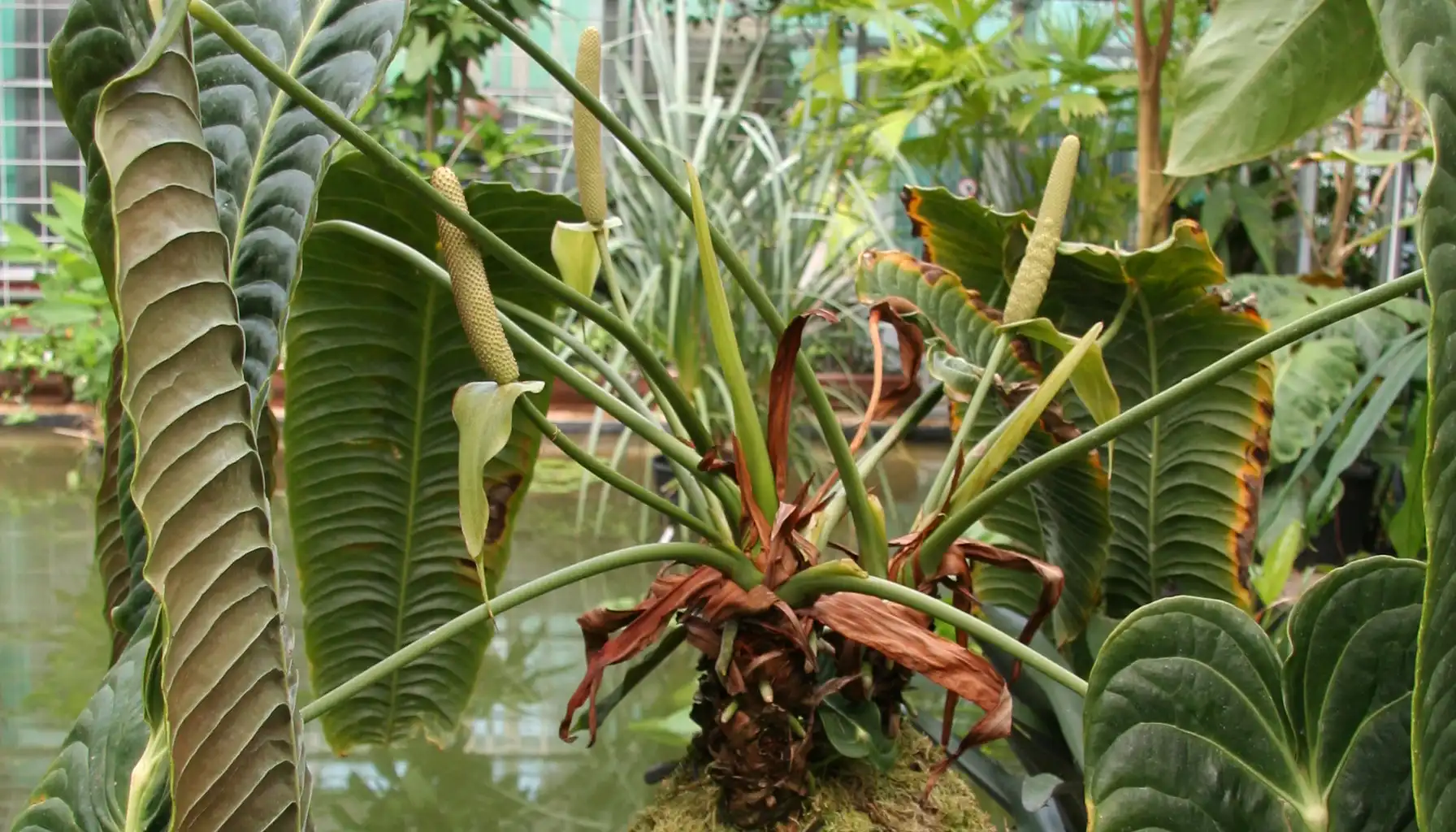What is a hoya plant? It’s also known as the wax plant. It’s a genus of tropical, semi-succulent vines and epiphytes native to Asia, Australia and the Pacific Islands.
It has thick, waxy leaves and clusters of fragrant, star-shaped flowers that can help with leaf Hoya plant identification.
Scientific Name: Hoya spp.
Common Names: Hoya Wax plant, porcelain flower, honey plant
Family: Apocynaceae (dogbane family)
Growth Type: Trailing or climbing vines, many epiphytic species
Toxicity: Generally non-toxic to humans and pets, but sap may cause mild irritation
Hoya Plant Types
Common Name | Botanical Name | Leaf Features | Flower Traits |
Wax Plant | Hoya carnosa plant | Thick, oval, glossy green; some variegated forms | Pink-white flowers with red centers; very fragrant |
Hindu Hoya Rope Plant | Hoya carnosa ‘Compacta’ | Curled, twisted leaves like rope | Pink clusters with sweet scent |
Silver Hoya Splash Plant | Hoya pubicalyx | Long, lance-shaped leaves with silver flecks | Purple Hoya plant star blooms, lightly scented |
Sweet Heart Hoya Plant | Hoya kerrii | Heart-shaped, thick succulent leaves | Small cream or pink flowers (rare indoors) |
Round Leaf Hoya | Hoya obovata | Rounded, deep green leaves with silver spots | Pale pink, star-shaped flowers |
Waxvine | Hoya australis | Smooth, oval green leaves; can be large | White flowers with red centers; highly fragrant |
‘Krimson Queen’ | Hoya carnosa variegata | Green leaves with white or pink edges | Pink/white flowers; sweet scent |
‘Krimson Princess’ | Hoya carnosa variegata | Green edges with creamy-white center | Pale pink, sweet-smelling flowers |
String Bean | Hoya shepherdii | Long, thin leaves like green beans | Small, white to pale pink blooms |
Fuzzy Leaf | Hoya curtisii | Tiny, rounded, gray-green leaves with silver | Tiny pale flowers; delicate look |
How to Care for a Hoya Plant
Light
They like bright, indirect light. They’re happiest near a sunny window with filtered rays—east-facing spots are ideal. A little gentle morning sun can boost blooming, but avoid placing them in harsh midday sunlight, especially thinner-leaved varieties, as they’re prone to scorching.
On the other end of the spectrum, too little light can lead to leggy vines and a complete lack of flowers.
Water
Less is often more. Hoyas are semi-succulents, which means they store water in their leaves and tolerate brief dry spells.
Let the top portion of soil dry before watering again—usually once every 7 to 10 days during the growing season.
In winter, you can slow things down, sometimes going two to three weeks between waterings.
Humidity and Temperature
They appreciate warmth and a touch of humidity. Average indoor conditions work fine for most varieties, but they’ll respond well to slightly higher humidity—particularly when they’re actively growing or flowering.
If your air is dry, consider grouping plants together, using a pebble tray or a small humidifier.
Anything below 10°C (50°F) should be avoided.
Soil and Potting
In the wild, many grow on trees rather than in soil, so it’s important to mimic that environment at home.
Choose a light, airy mix—something you’d use for orchids or succulents. A combination of cactus mix, orchid bark and perlite works beautifully.
As for pots, Hoyas prefer being slightly root-bound. Repotting every two to three years is plenty, and always go for containers with drainage holes.
Feeding and Flowering
Hoyas do benefit from monthly fertilizing during spring and summer. A balanced liquid fertilizer works well for general growth. If you want to have Hoya plant flowers, especially in mature plants, a bloom booster with higher phosphorus can help. Just don’t overdo it. Too much fertilizer will result in lush leaves, but no flowers.
Once they bloom, don’t cut off the flower stalks—they often rebloom from the same spot year after year.
Growth, Pruning, and Propagation
You can train them up trellises, wrap them around hoops, or let them trail from hanging pots. Pruning is mostly aesthetic. Just avoid removing the knobby flower spurs.
How to propagate a Hoya plant? Stem cuttings with at least one node can root in water or soil within a few weeks. With the right conditions—warmth, humidity, and filtered light—they root quickly and grow steadily.
Safety
Is the Hoya plant toxic to cats and other pets?
Its thick leaves may cause mild stomach upset if chewed, so it’s best to keep it out of reach of overly curious animals.
Common Hoya Plant Problems & How to Fix Them
1. Yellowing Leaves
Causes:
Overwatering
Poor drainage
Compacted or soggy soil
Solutions:
Let the top 2–3 inches of soil dry before watering Hoya (plant) again
Switch to a well-draining soil mix (e.g., cactus mix + perlite + orchid bark)
Ensure your pot has drainage holes
2. Wrinkled, Shriveled, or Soft Leaves
Causes:
Solutions:
Soak the plant thoroughly if the soil is dry
Check for root rot or dryness by unpotting gently
Adjust your watering frequency—water when the top 2 inches are dry
3. No Flowers
Causes:
Solutions:
Move the plant to a brighter spot (east or south-facing window)
Be patient—some take years to bloom
Never cut old flower stalks
Keep the plant slightly root-bound for best results
4. Brown or Crispy Leaf Edges
Causes:
Solutions:
Increase humidity using a pebble tray or humidifier
Avoid letting water sit on leaves under direct light
Flush the soil monthly with clean water to remove salt buildup
5. Stunted or Slowed Growth
Causes:
Solutions:
Use a balanced liquid fertilizer monthly during spring and summer
Move the plant to a brighter location
Keep temperatures between 18–27°C (65–80°F)
Give the plant time to recover after stress
6. Leaf Drop
Causes:
Solutions:
Keep the plant away from AC vents, heaters, or open windows
Maintain a consistent watering routine
Avoid moving the plant frequently
7. Pests (Mealybugs, Spider Mites, Scale)
Signs:
White cottony spots (mealybugs)
Fine webbing or speckled leaves (spider mites)
Hard brown bumps on stems or leaves (scale)
Solutions:
Wipe affected areas with alcohol-dipped cotton swabs
Use neem oil or insecticidal soap weekly until pests are gone
Isolate the plant to prevent spread
FAQs
Is Hoya plant care easy?
Yes, especially for indoor gardeners. They are forgiving and drought-tolerant. They grow steadily and can live for decades with minimal fuss.
What is a Hoya plant Heart?
Also known as Hoya kerrii, this variety is famous for its thick, heart-shaped leaves. It’s often sold as a single rooted leaf in a pot, which looks cute but may not grow into a full plant unless it includes a node.
What does a Hoya Heart plant full grown look like?
A mature one becomes a trailing vine with thick, heart-shaped leaves spaced along the stem. In time, it can grow several feet long and even produce clusters of fragrant flowers, though it's a slow grower.
Is an indoor Hoya plant a good option?
They are perfect for indoor spaces due to their compact growth, low watering needs, and ability to thrive in bright, indirect light. Many varieties also trail beautifully from shelves or hanging pots.
What is a Hoya Tricolor plant?
This is a variegated cultivar of Hoya carnosa, also called ‘Krimson Princess’. It features creamy white or pink centers with green margins and produces beautiful pinkish flowers under bright light.
What is a Hoya hoop plant?
It’s simply a Hoya (often carnosa or compacta) trained around a circular wire support or trellis. This shape allows for compact vertical growth and looks great in decorative pots.
What is a Hoya bella plant?
It’s a smaller-leaved, trailing Hoya plant variety with delicate white-and-pink flowers. It's good for hanging baskets and thrives in high humidity with bright, indirect light.
Are there hanging Hoya plant varieties?
Yes—many of them naturally trail. Varieties like linearis, bella, compacta, and retusa are especially popular as hanging plants.
What is a Hoya compacta plant?
Also called the Hindu Rope, Hoya compacta is a curled-leaf mutation of Hoya carnosa. It has thick, coiled leaves, a trailing habit, and produces waxy pink flowers.
Related AI Plant Finder Posts
